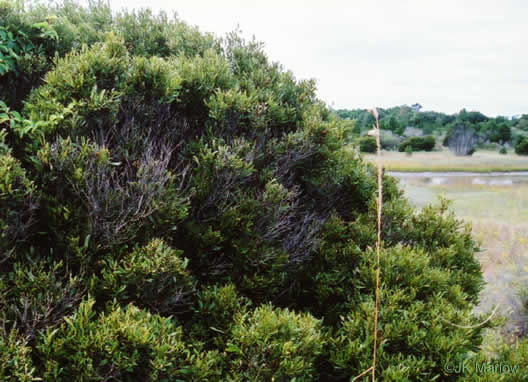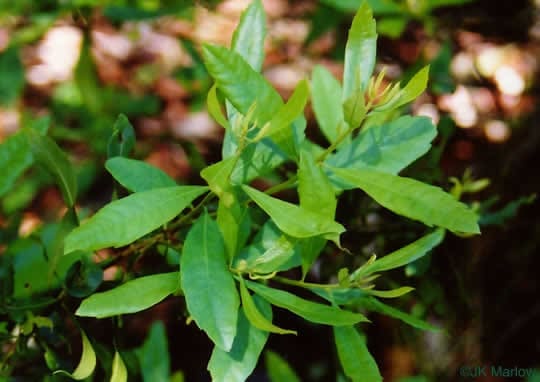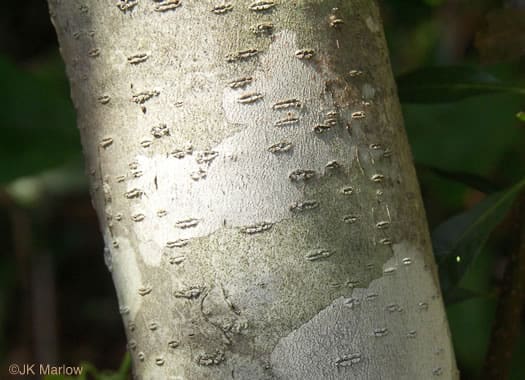Myricaceae
common wax-myrtle
Morella cerifera
Synonyms
Cerothamnus ceriferus
Myrica cerifera
Other Common Names
southern bayberry
Plant Type
Small Tree/Large Shrub (10-25 ft)
Life Cycle
Perennial
Typical Size
20-25 ft. tall
8-10 ft. wide
Tolerant of
Deer, Drought, Occasional Flooding, Salt Exposure
Propagation
By seed, By cutting
Plant Propagation Notes
Cold moist stratify seed for 60-90 days. Cuttings can be taken from semi-hardwood or softwood.
Plant Planting Notes
Provide up to 10 ft spacing. Easily transplanted when young. Reseeds readily.
Plants/Diseases
My drop leaves after transplant or extreme cold snaps.
Wildlife Benefits
Nectar/pollen source for pollinating insects, Host plant for butterfly larvae, Fruit/seeds for birds
Leaves
Leaves alternate, oblanceolate to obovate with serrate margins.
Flowers
Tiny green to yellow flowers on catkins. Fragrant. Dioecious.
Fruit
Dark blue drupes that look gray to white due to waxy coating.
Bark
Light gray, smooth.
Toxicity
No known toxicity.
Edibility
Leaves can be used as substitute for bay leaves.
Ethnobotanical Use
The waxy coating on the fruits was once used to make candles.

USDA Hardiness Zones
7, 8, 9, 10
Light Exposure
Full Sun, Part Sun/Shade
Soil Moisture
Dry, Medium, Moist
Soil Drainage
Well-drained
Soil pH
Acidic (less than 6.0)
Native in South Carolina?
Yes
Plant Native Habitat
Wet to moist habitats such as pocosins, brackish marshes, interdune swales.
Global Conservation Status (NatureServe)
Secure (G5)
Federal Conservation Status (USFWS)
Not Listed
Distribution Notes
Common in the South Carolina coastal plain and sandhills. Introduced to the piedmont. Absent from the mountains.



